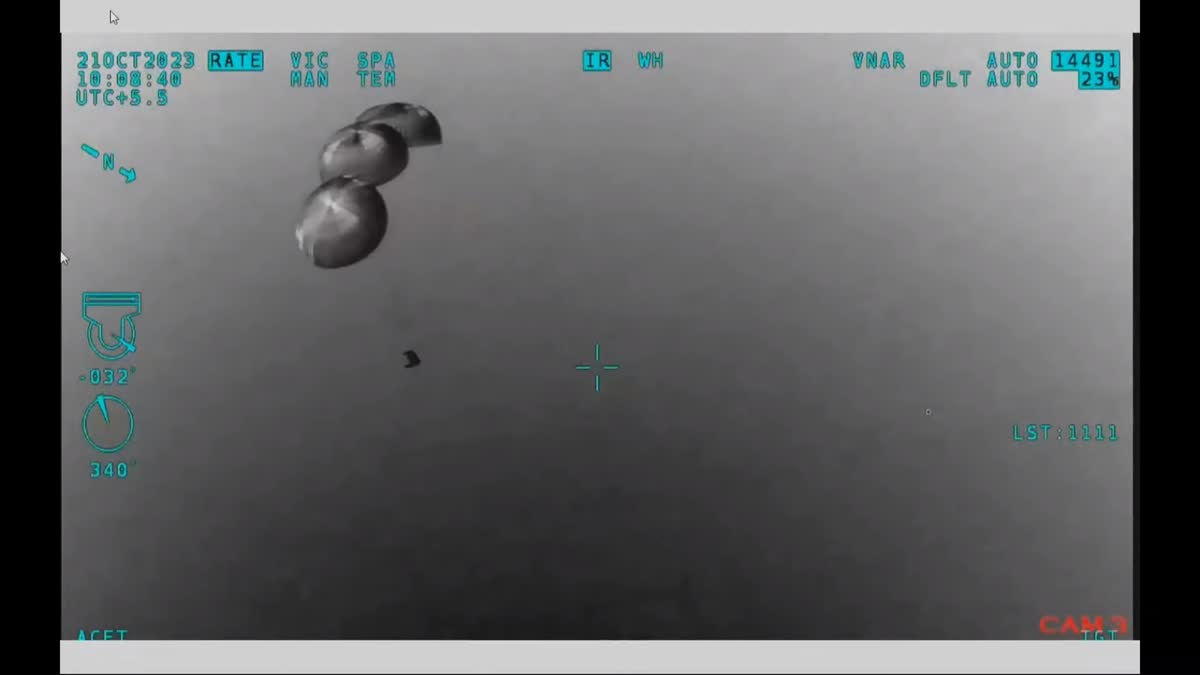Sriharikota (Andhra Pradesh): The Indian Space Research Organisation has successfully completed its launch of its maiden Test Vehicle for the Gaganyaan human space flight proposed to be undertaken in 2025, while ticking all mission objectives.
"I am happy to announce the successful accomplishment of TVD1 mission objectives" ISRO Chairman S Somanath said.
The purpose of this mission was to demonstrate the crew escape mission for the Gaganyaan programme, through a test vehicle demonstration. The vehicle had gone up to a mach number above speed of sound, the ISRO chief said.
The vehicle initiated an abort condition for the crew escape system to function. It took the crew module away from the vehicle. Subsequent operation of the crew module separation and all the parachutes opening. And touched down on the sea at the required velocity has been accomplished, he said.
"We will further be doing the the approach in recovery of the crew module, collect it from the sea and verify the data."
-
Mission Gaganyaan
— ISRO (@isro) October 21, 2023 " class="align-text-top noRightClick twitterSection" data="
TV D1 Test Flight is accomplished.
Crew Escape System performed as intended.
Mission Gaganyaan gets off on a successful note. @DRDO_India@indiannavy#Gaganyaan
">Mission Gaganyaan
— ISRO (@isro) October 21, 2023
TV D1 Test Flight is accomplished.
Crew Escape System performed as intended.
Mission Gaganyaan gets off on a successful note. @DRDO_India@indiannavy#GaganyaanMission Gaganyaan
— ISRO (@isro) October 21, 2023
TV D1 Test Flight is accomplished.
Crew Escape System performed as intended.
Mission Gaganyaan gets off on a successful note. @DRDO_India@indiannavy#Gaganyaan
Why launch was withheld earlier? Somanath explained why the computer did not offer its clearance for launch earlier in the day.
He said the launch was rescheduled in the morning for about 45 minutes due to weather.
The rescheduled launch at 8.45 am could not happen due to the 'hold' issued by the ground computer which operates the Automatic Launch Sequence (ALS).
"We have identified the reason behind the hold as a 'monitoring' anomaly in the system and the same was corrected."
It took us some time to refill the gases. Afterwards, the ALS and mission computer and ground computer cleared the rocket for liftoff, he explained.
A key exercise- Somanath said he was happy that the ISRO team was able to get back on track and successfully test the TVD1 within the launch window.
It was a great training exercise for us and team as we gear up for the manned Gaganyaan mission in the future, he said.
I'm happy that our team was able to comeback at a short span of time. We will come back with more data on recovery of the crew module.
-
TV D1 Test Flight
— ISRO (@isro) October 21, 2023 " class="align-text-top noRightClick twitterSection" data="
Liftoff attempt couldn't be completed.
Updates will follow.
">TV D1 Test Flight
— ISRO (@isro) October 21, 2023
Liftoff attempt couldn't be completed.
Updates will follow.TV D1 Test Flight
— ISRO (@isro) October 21, 2023
Liftoff attempt couldn't be completed.
Updates will follow.
The liftoff- ISRO rocket carrying payloads related to crew safety in Gaganyaan mission has lifted off from Sriharikota as per its revised launch schedule.
"Reason for the launch hold is identified and corrected. The launch is planned at 10:00 Hrs. today," ISRO wrote in X.
The automatic launch sequence of the onboard computer held back the launch of the space agency's previous attempt in the day 5 seconds before the scheduled lift-off time.
What did ISRO say about no 'liftoff'? The ISRO chief said the launch's reschedule details will be announced shortly after the analysis on the anomaly which led to the holding back command issued by the computer involved in the ground check at the engine ignition stage.
"The liftoff of TVD1 could not happen today. Initially, the launch was scheduled for 8 am. There was a postponement of the liftoff time to 8.45 am due to weather situation."
And we had a very smooth ALS - the Automatic Launch Sequence, leading up to the command, to liftoff, to the engine... but the engine ignition has not happened in the nominal course. We have to find out what went wrong, with that, Somanath said.
He said the entire vehicle is very safe and will have to be checked by the ISRO scientists.
We will have to reach the vehicle and then look at what has happened now. We will come back soon after analysing, what has triggered the automatic launch sequence holding the vehicle. What has happened is...the onboard computer which is doing this function the ground checkout computer...doing the function has withheld the launch, in view of the anomaly observed.
We will come back with the anomaly understanding and correct it and schedule the launch very soon. That will be announced a little later after the analysis is completed.
On Saturday, the launch was rescheduled by 30 minutes from the spaceport here. Test Vehicle D1 mission was scheduled for a lift-off from the first launch pad at 8 am which was revised to 8.30 am.
"The lift-off is rescheduled at 08:30 Hrs. IST," an ISRO update on 'X' said. An announcement to this effect was also made at the Mission Control Centre.
It was further rescheduled by 15 more min. The space agency wrote in X that it would update the liftoff time once it is released.
The clearances from the Mission Director and the Vehicle Director were granted for the launch and the control was shifted to the onboard computer at the last stage.
The test vehicle mission is predecessor to the Gaganyaan programme which aims to send humans into space on a Low Earth Orbit of 400kms for three days and bring them safely back to the Earth.


